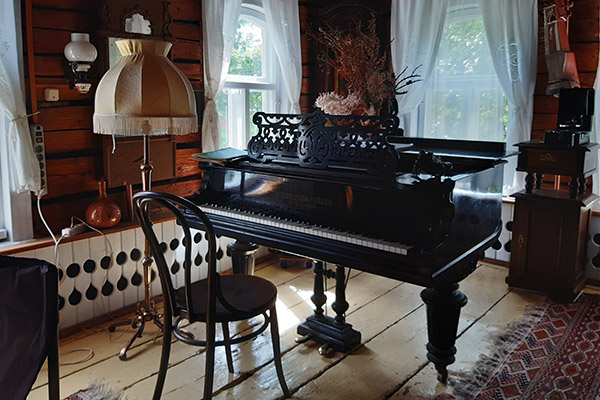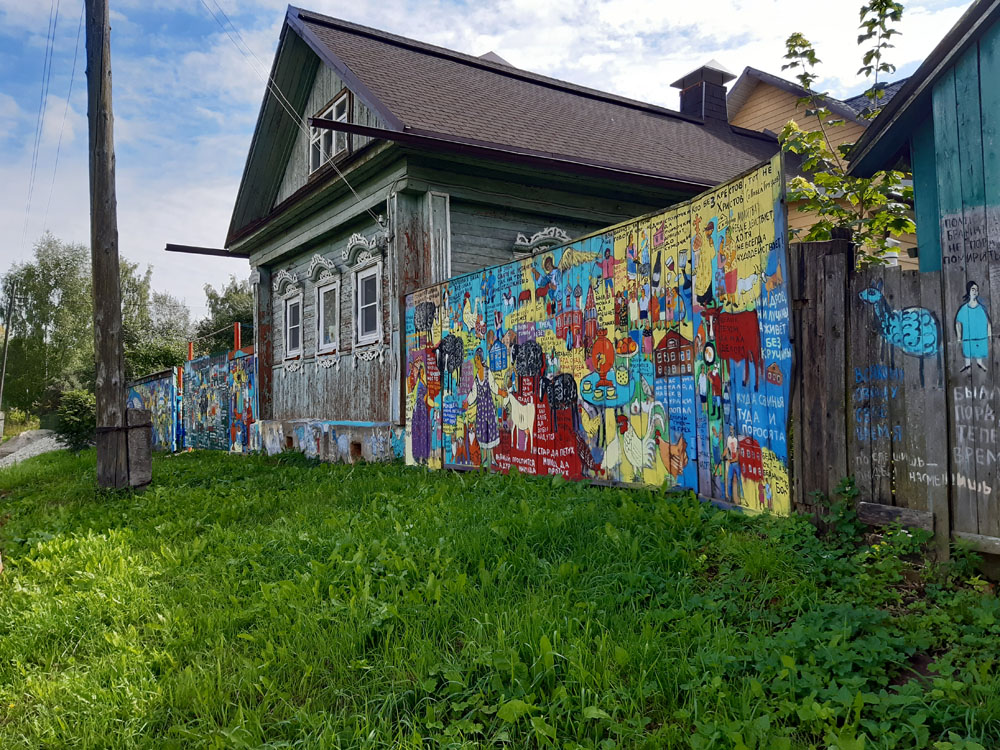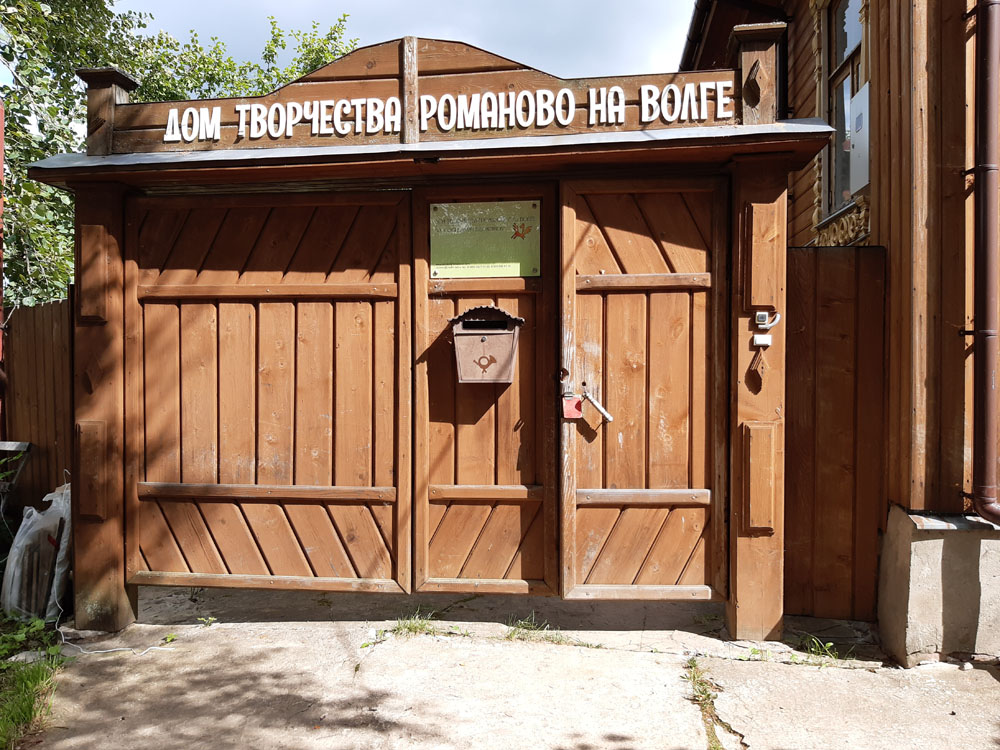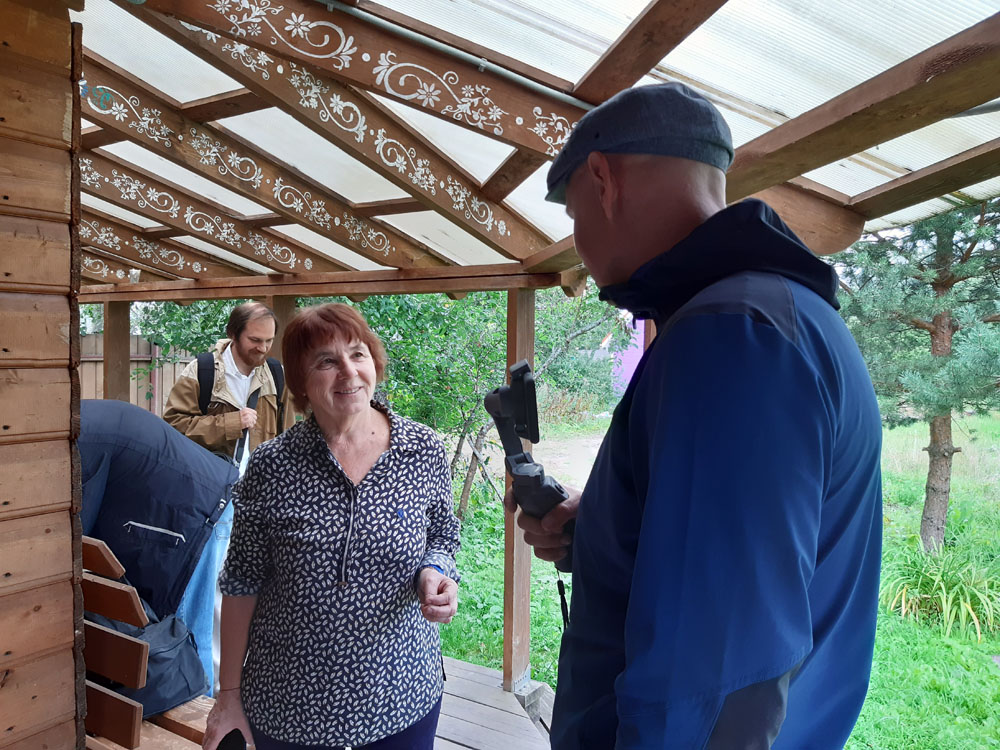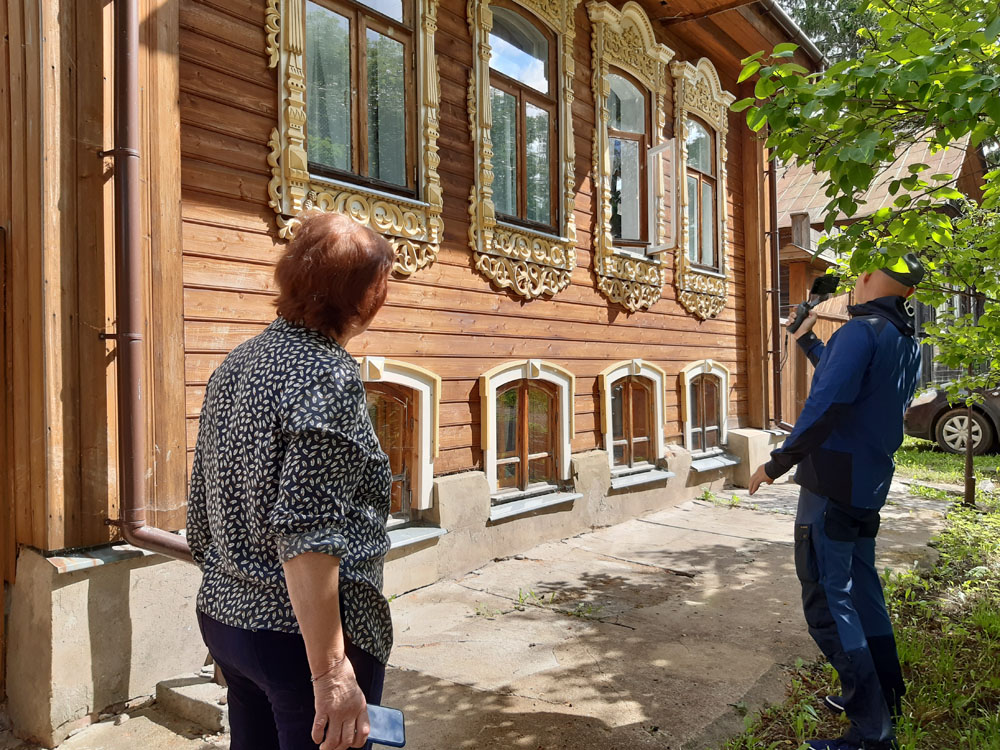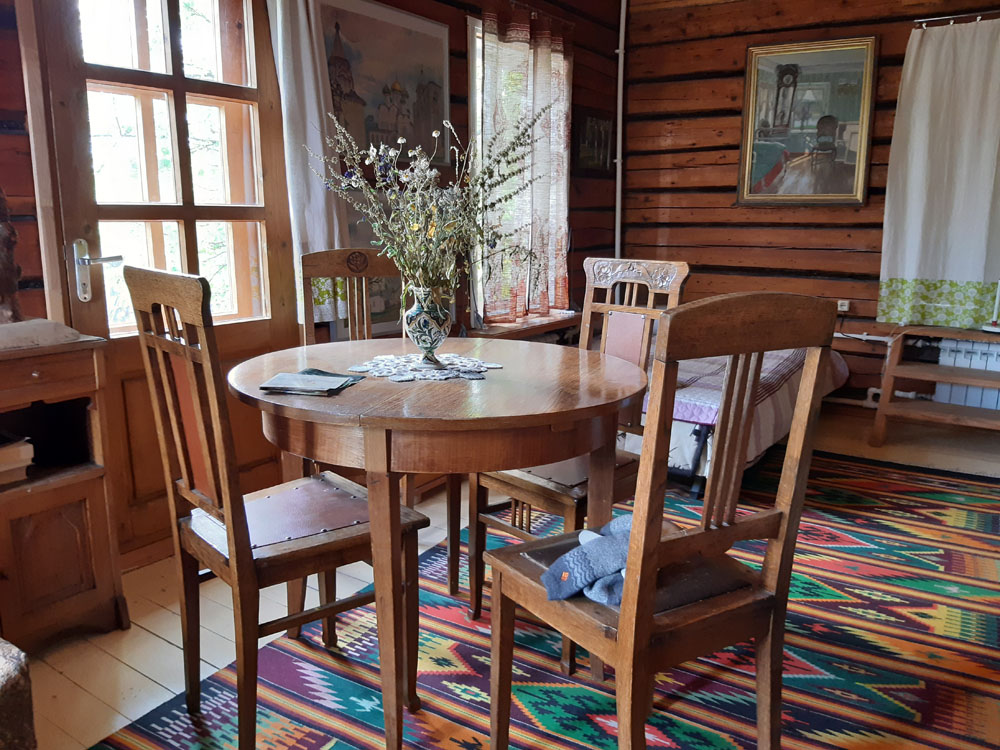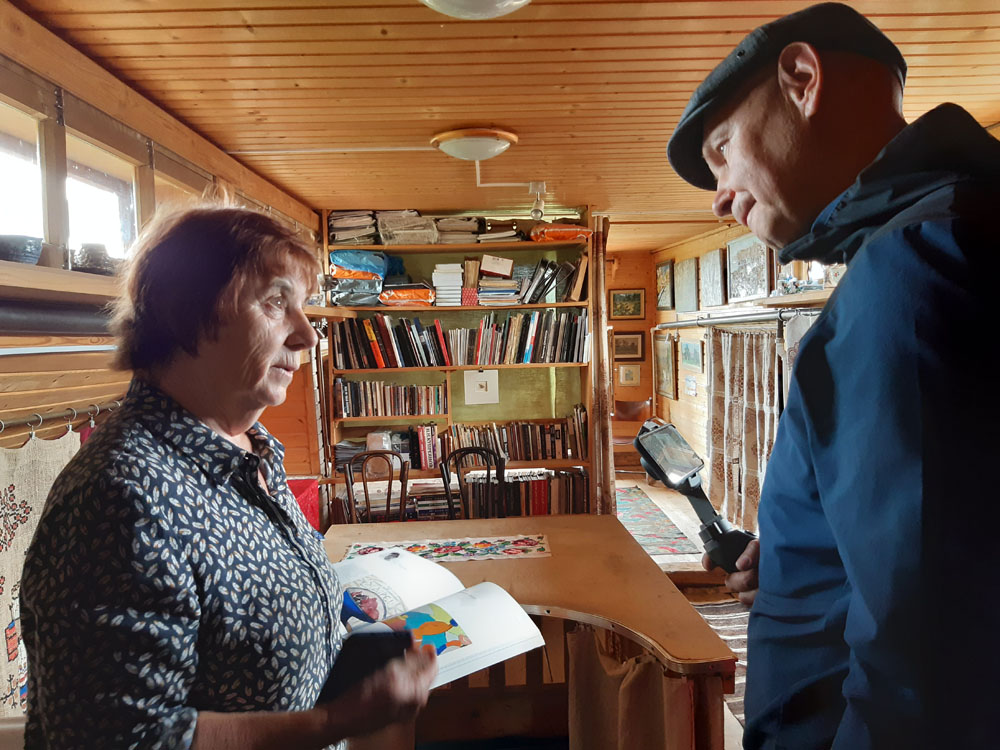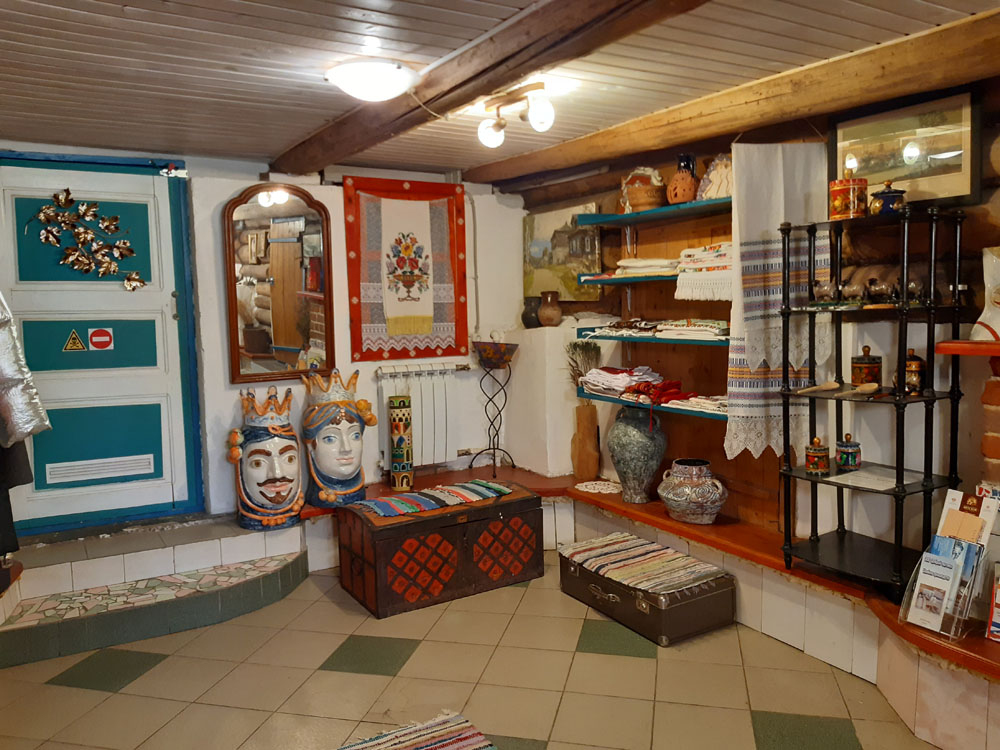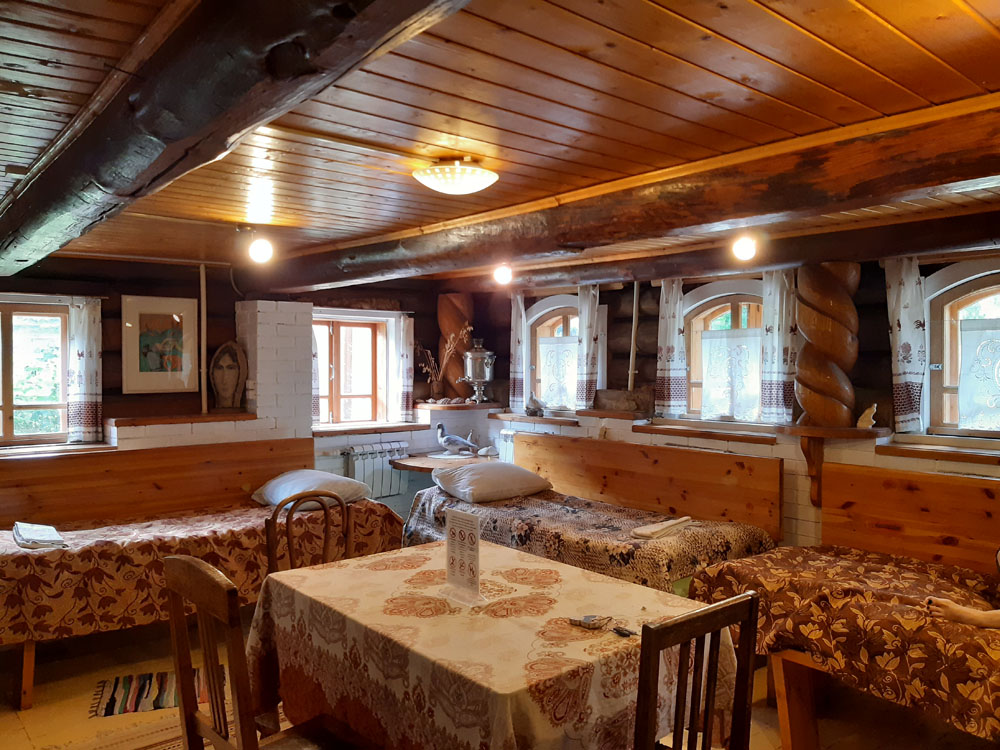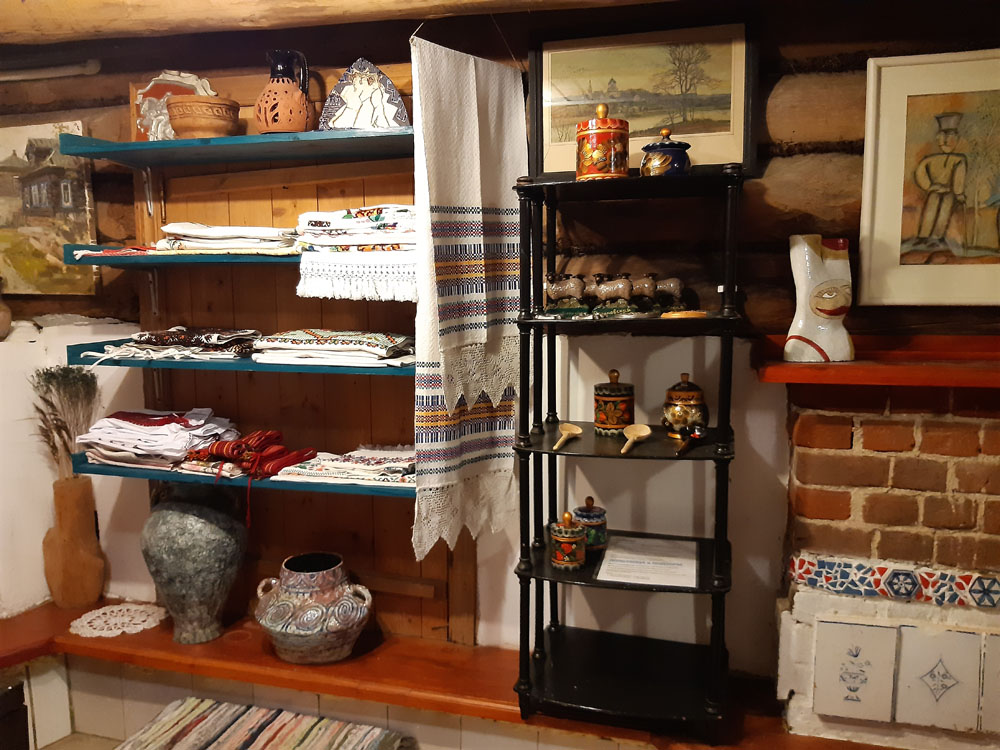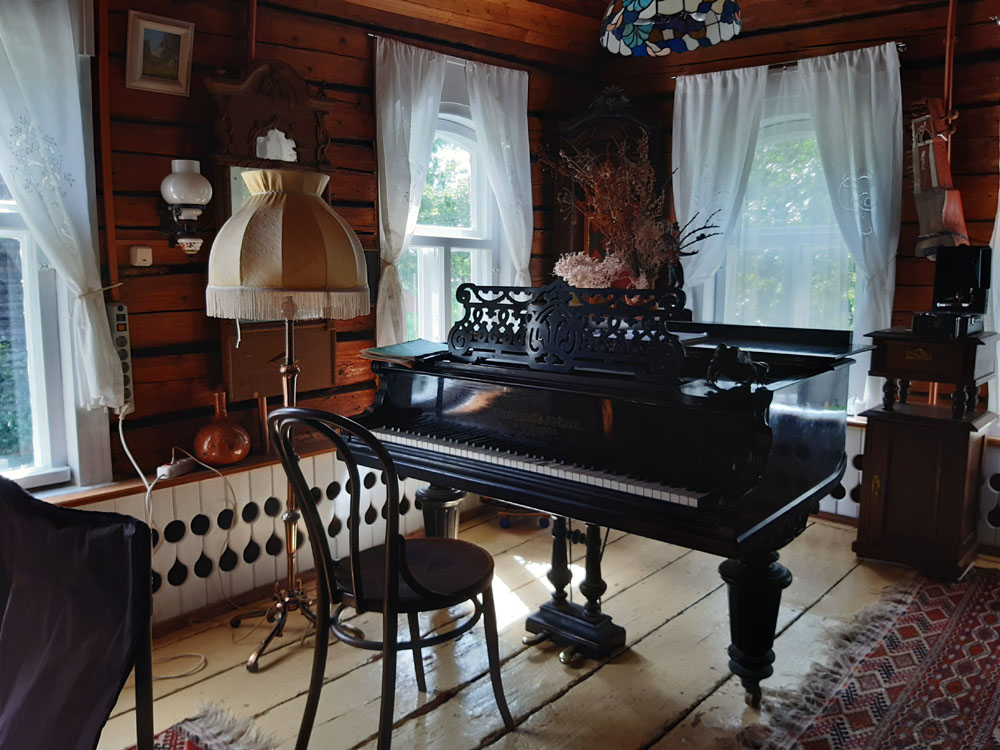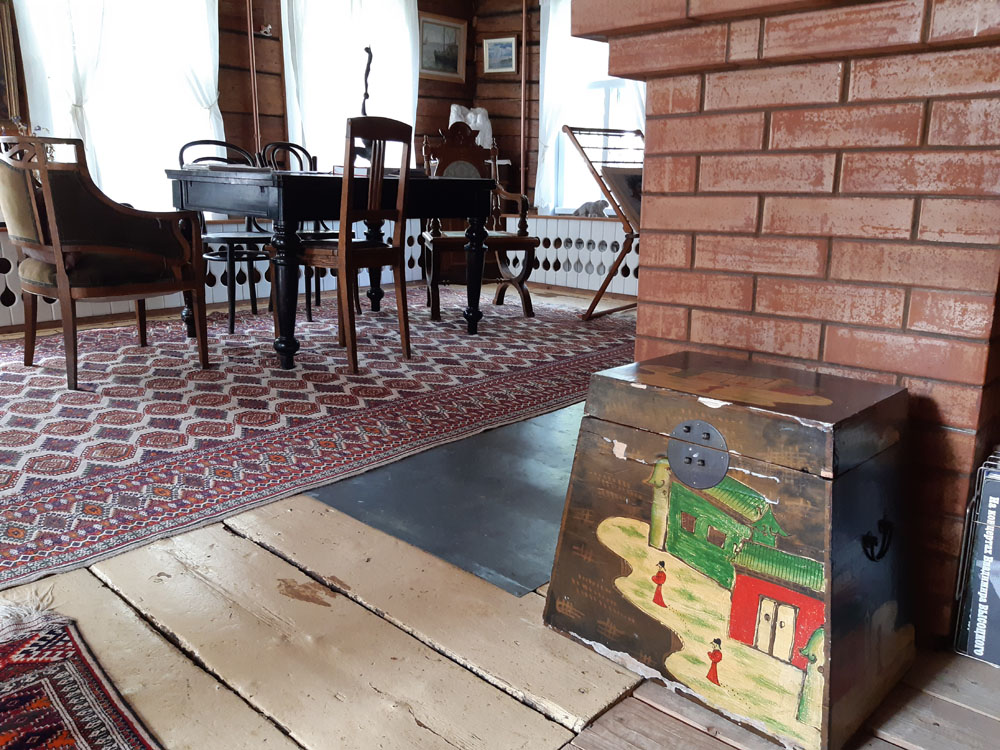The ancient Russian town of Romanov-Borisoglebsk (Tutaev), which was visited by the team of the Association of Private Museums of Russia in August this year during an expedition to the Yaroslavl Region, has long attracted the creative community. At the beginning of the last century, the great Russian painter Boris Kustodiev painted his famous paintings “Walking on the Volga” and “Province” there. Today, a remarkable painter Sergei Taktamyshev from St. Petersburg and artists, a married couple Olga Motovilova and Ilya Komov from Moscow, live and work in Tutaev. The fence near their house painted in a folk style a few years ago immediately became a local tourist attraction. But most importantly, there is an unusual house museum in the left-bank part of the city – the Romanovo-on-Volga Art Center, founded by Lilia Slavinskaya, an artist, head of the Les Oreades Gallery, a member of the Russian Geographical Society, a traveler, a participant in expeditions to the shores of Antarctica, to the Arctic and Himalayas.
The idea of creating a place where cultural and artistic figures could gather was gradually progressing in Lilia’s mind. Since late 80s, she has seen art centers decline and close, and the environment in which artists worked together and, sharing experience and mastering new techniques, grew creatively and professionally, disappear.
“It was painful for me to see this collapse, and then I wanted to do something in order to preserve the traditions of the art centers,” recalls Lilia Slavinskaya.
Chance helped Lilia Slavinskaya make a dream come true. It so happened that in 2000 she sold the painting “Easter” by Eduard Vyrzhikovsky from the “To Your Name” exhibition of the Union of Artists of Russia in the Central House of Artists and, in order to give out the proceeds, she came to Tutaev on the left side of the Volga River. It was at this time that a mansion was sold there, built at the end of the 19th century by a wealthy merchant, cattle dealer Dmitry Velikoretsky. The house was in a dilapidated condition. According to Lilia Slavinskaya, the mansion was leaning to the ground; there were no windows and heating. After examining it, she swore to her friend that she would never buy it. “But… miracles were done in heaven. The owner, Valentina, claimed that she only wanted to sell it to me. Eduard called me every day. And suddenly one of the “New Russians” brought money wrapped in a newspaper, telling me that it was for the realization of my dream,” says Lilia Slavinskaya.
Rebuilding the house took a tremendous amount of effort. For several years, a great deal of work was carried out to restore and equip the building. In 2008, the mansion received its first guests and it gradually began to live its new life. Rooms were filled with warmth, piano music, books, paintings, ceramics, furniture collected in the Yaroslavl region in the 50s of the last century, and many others, which pleases the eye and helps to create. Realizing that every thing that comes into view fosters an appreciation, Lilia tried to collect only good works of interesting authors. In addition to her own works, the house is decorated with paintings by Viktor Sorokin, Mikhail Matorin, Alexei Belyanin, Alexandra Zabelina, Alla Belyakova, Elena Shigal, artist and architect Evgeny Chivikov, as well as wood paintings by Nizhny Novgorod craftswomen, and ceramics by Antonina Kornoukhova and Elya Nevinnaya.
Lilia Slavinskaya owns a large collection of works by Soviet and Russian artists. In the future, she plans to create two more cultural institutions in Tutaev – the Museum of Art of the USSR and Russia and the Three Poles Museum of Lilia Slavinskaya, where her own paintings of both artistic and scientific value, dedicated to trips to the Arctic, Antarctic and Himalayas, would be hosted. It is pleasant to note that the artist made such a decision during the stay at the Art Center of the team of the Association of Private Museums.
